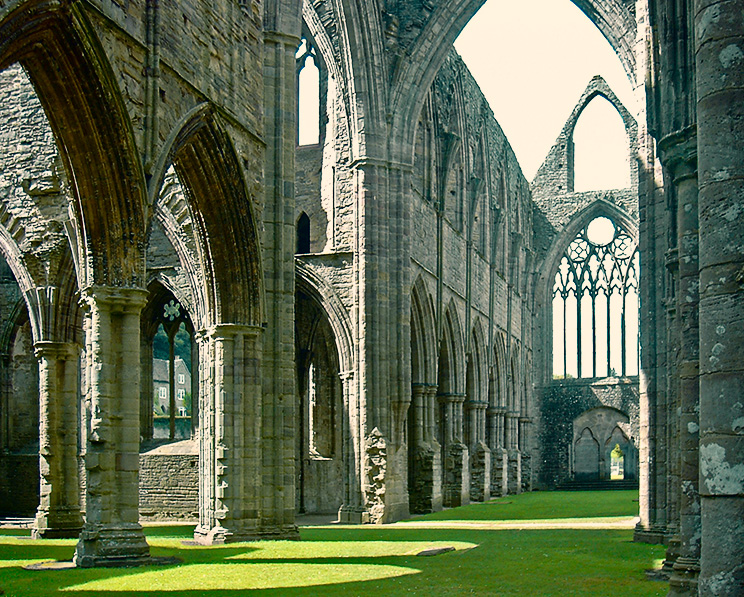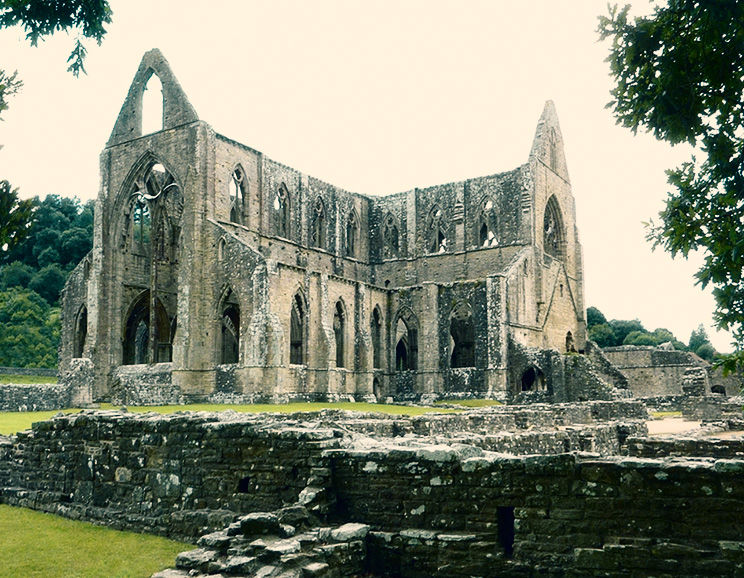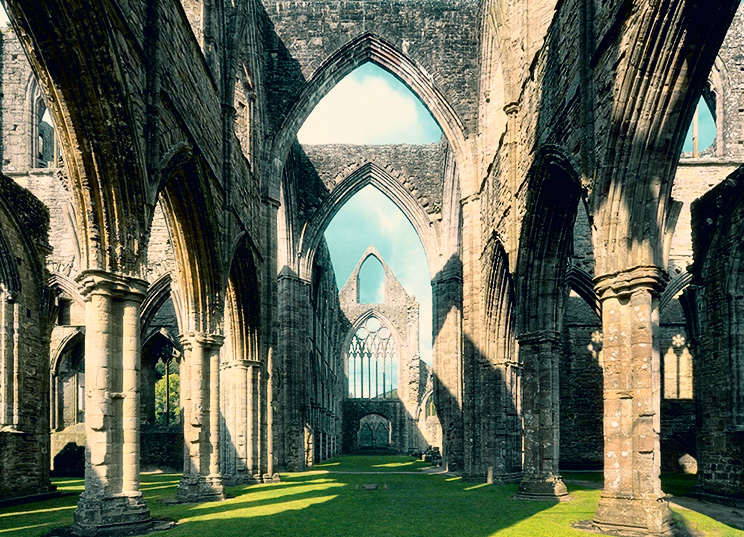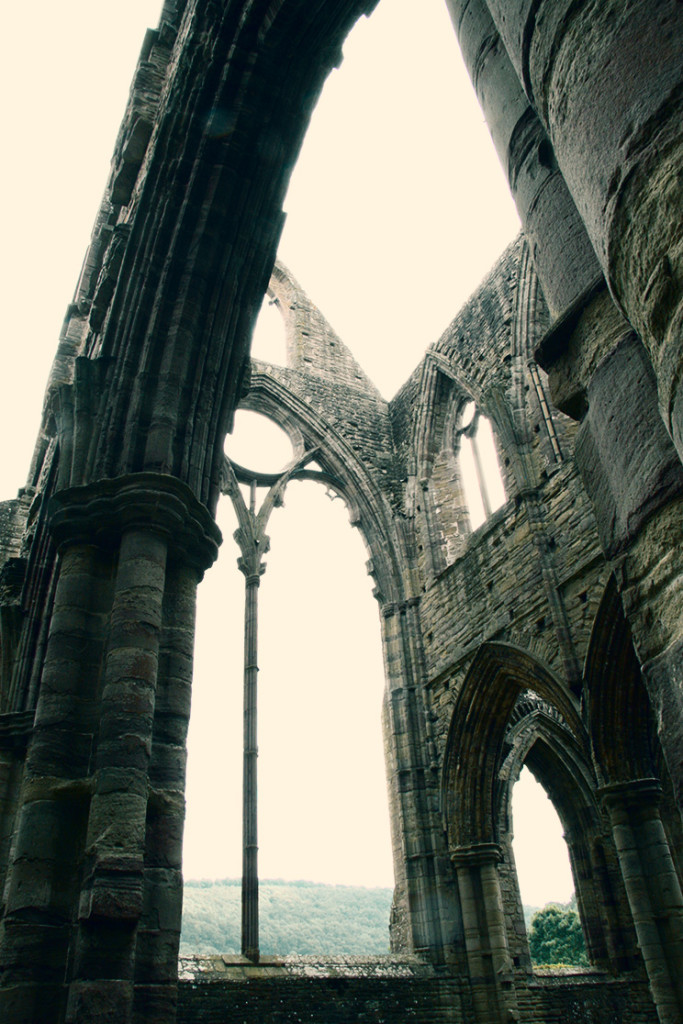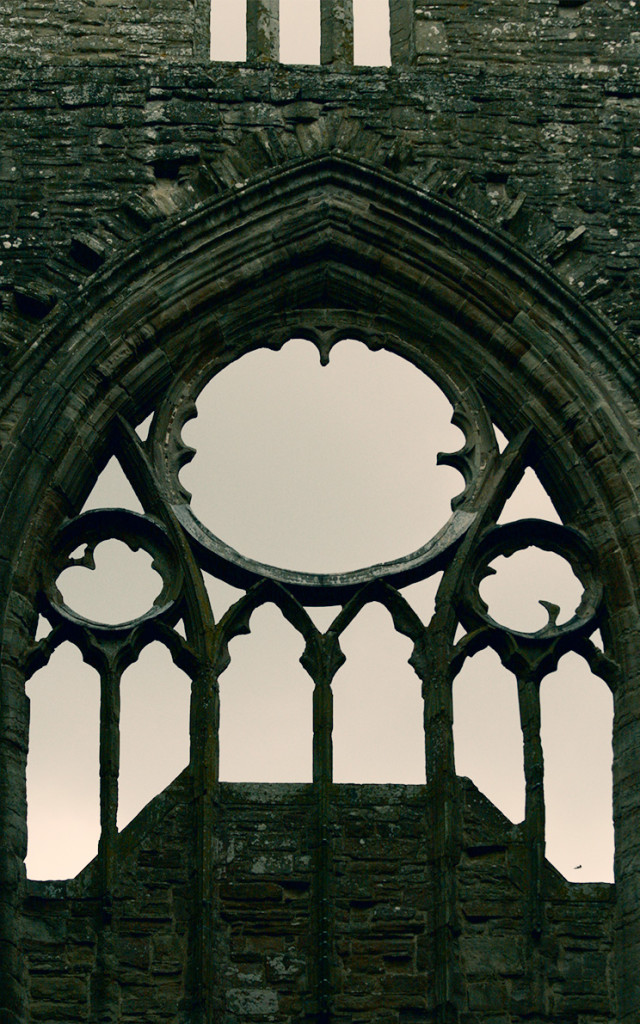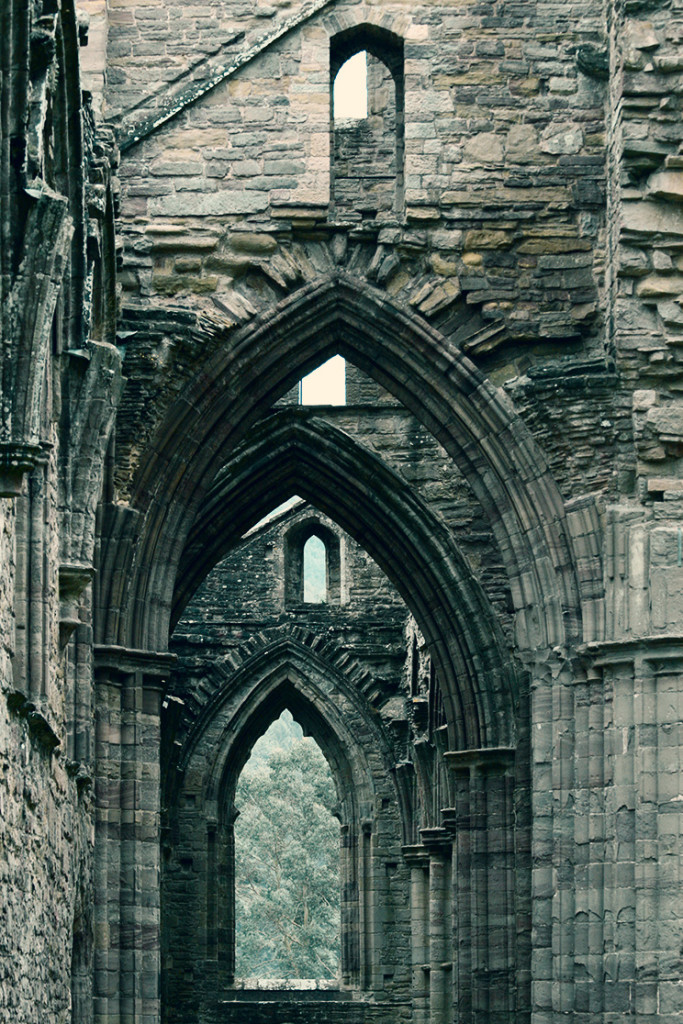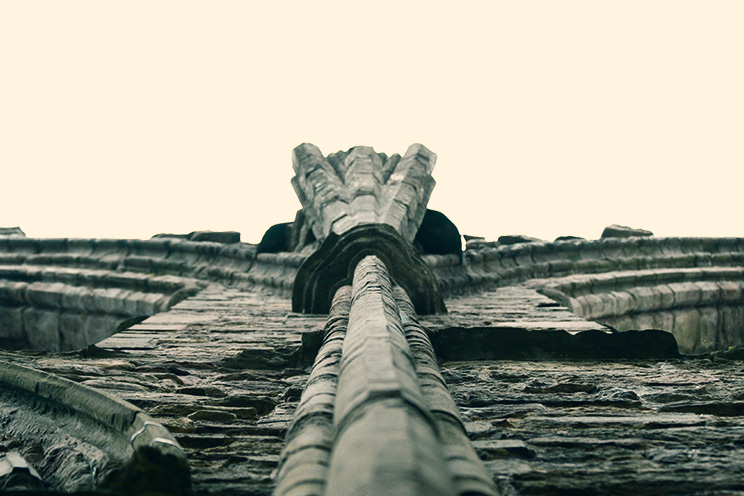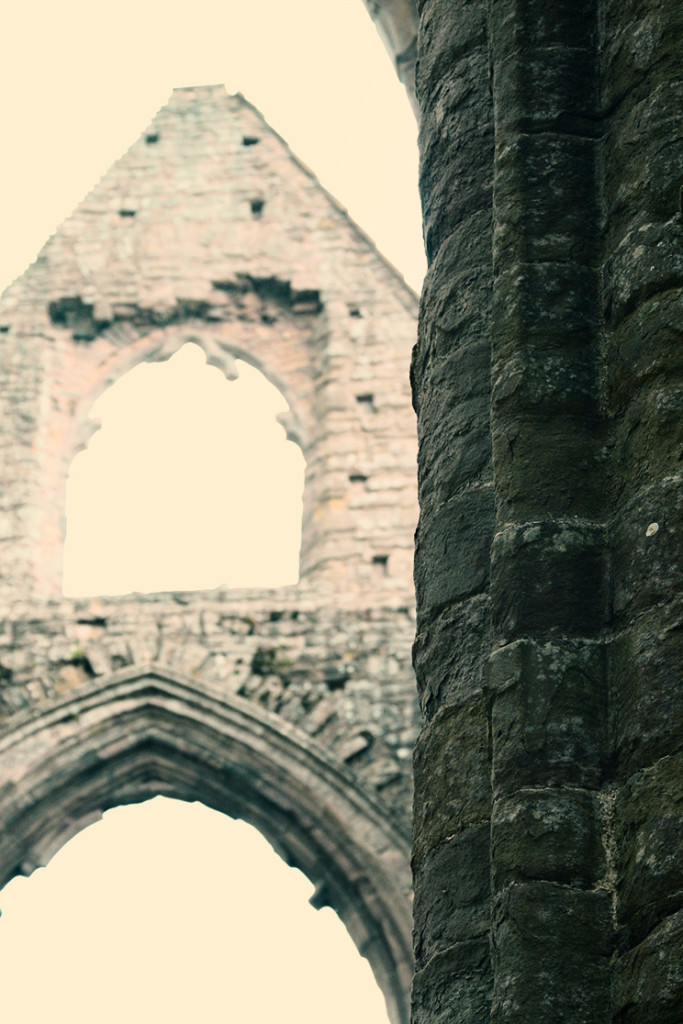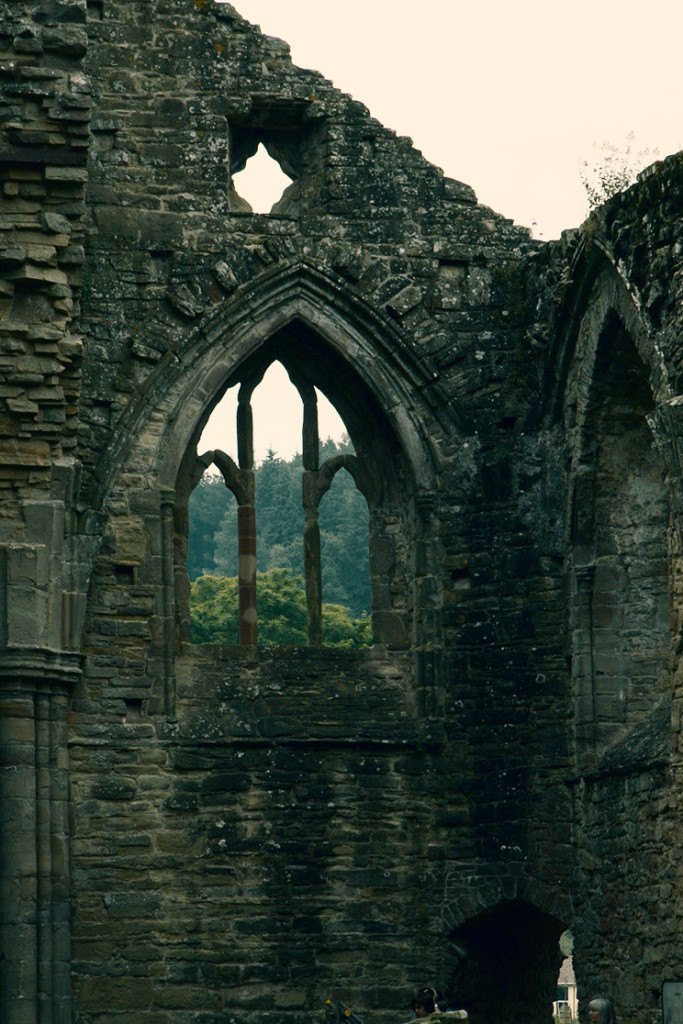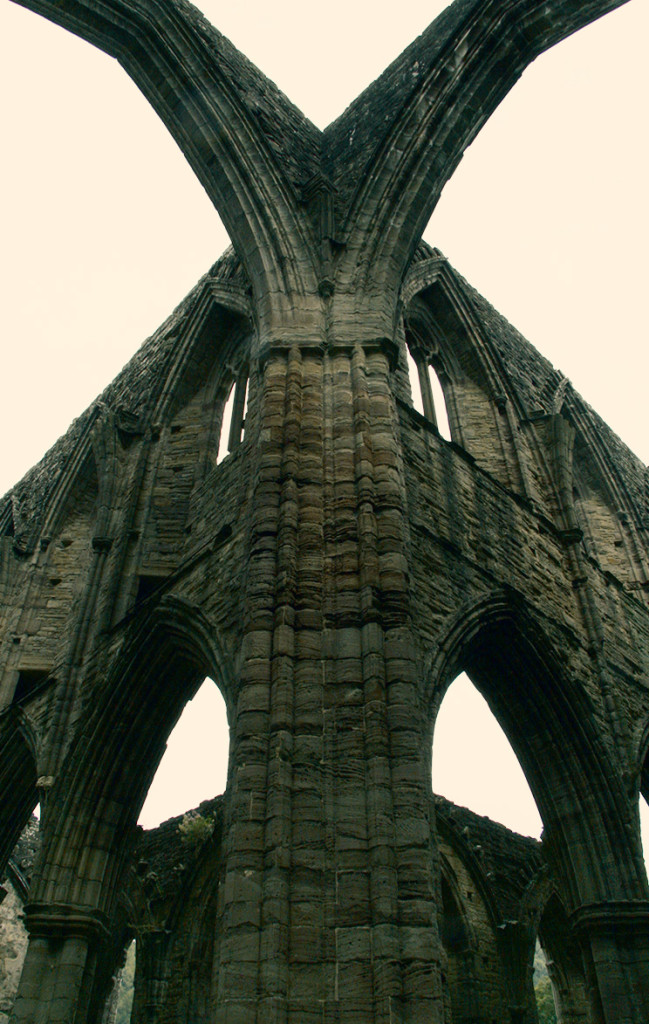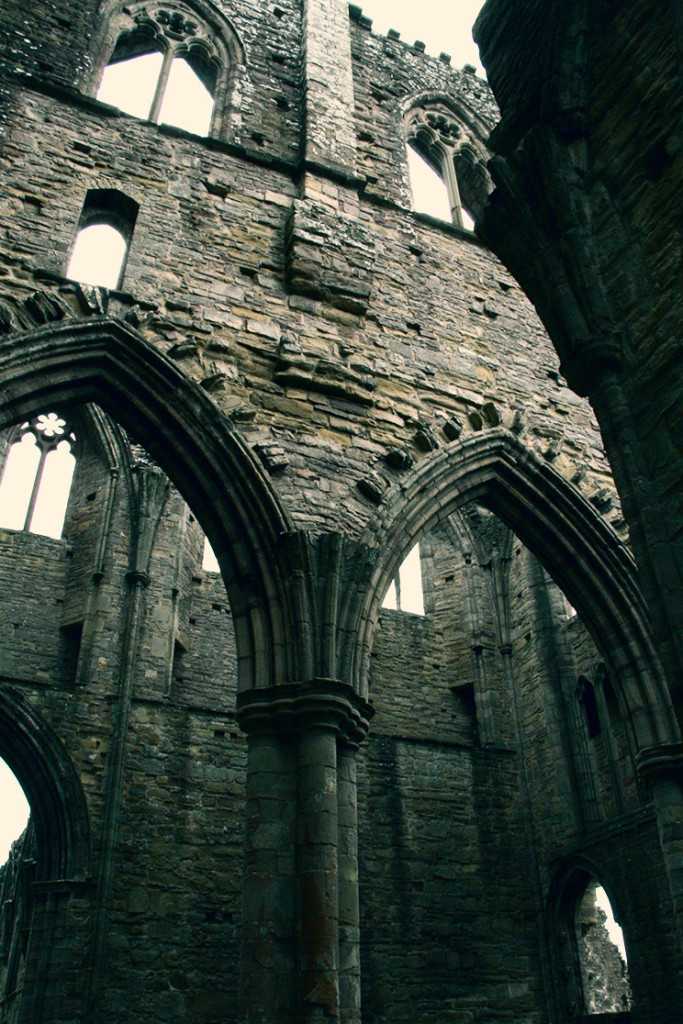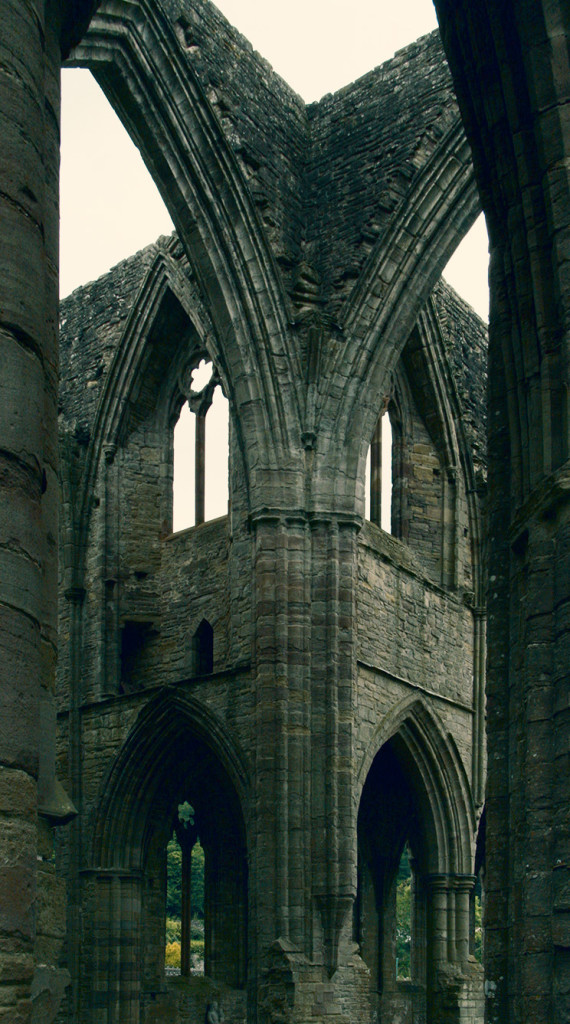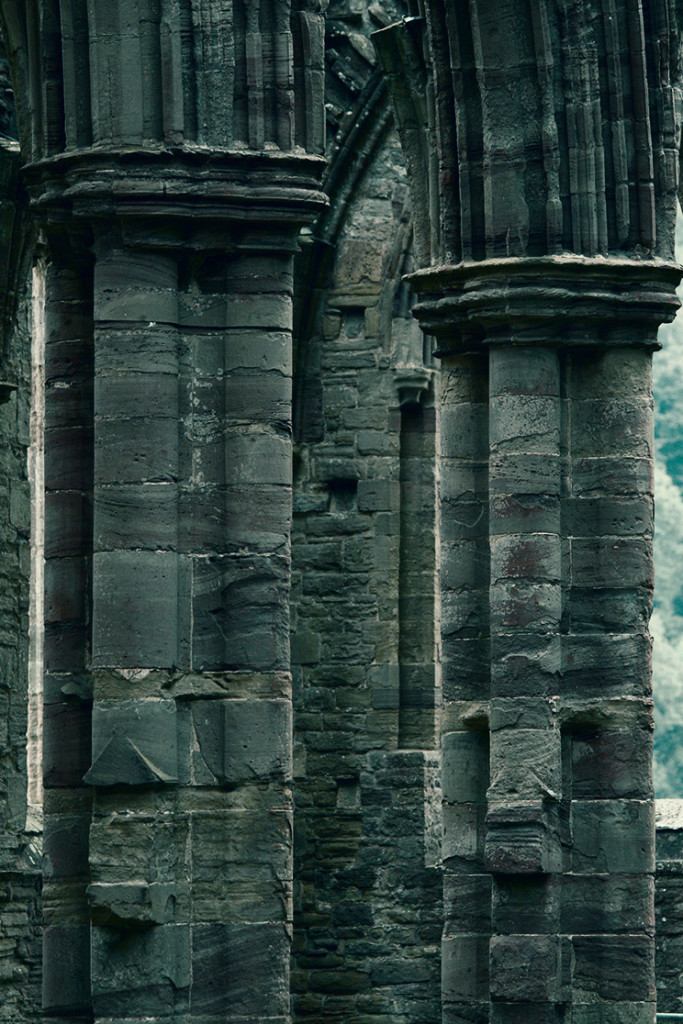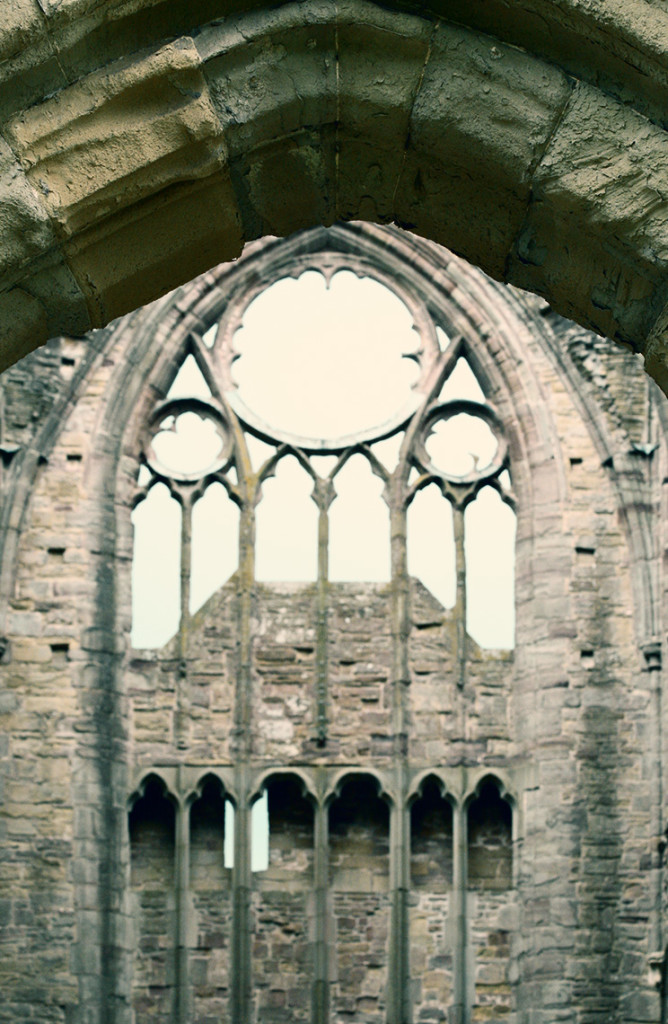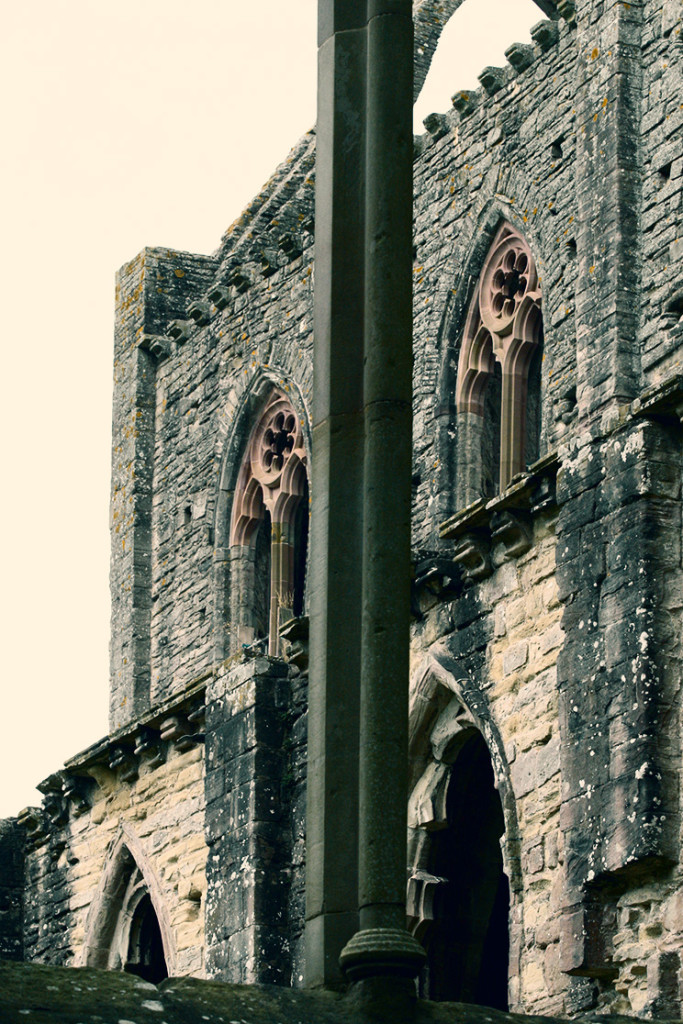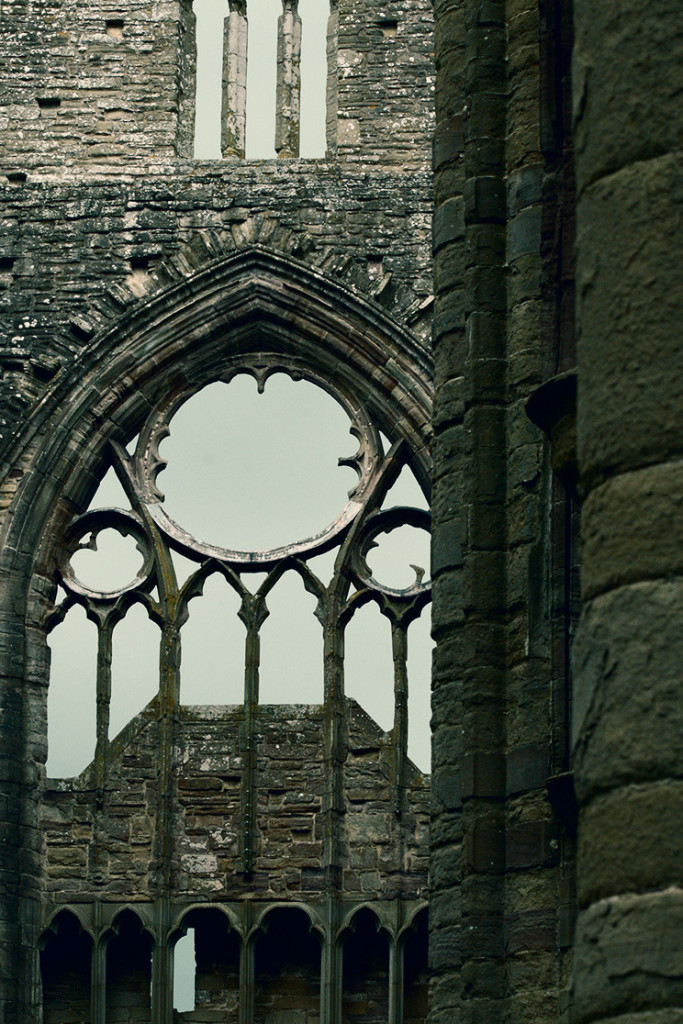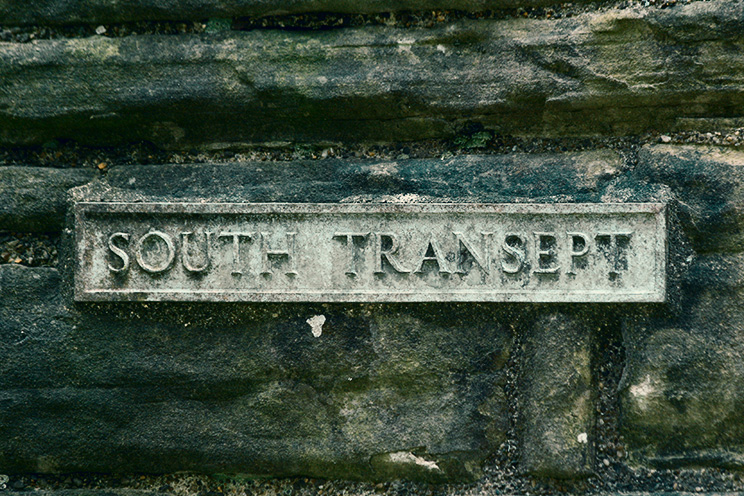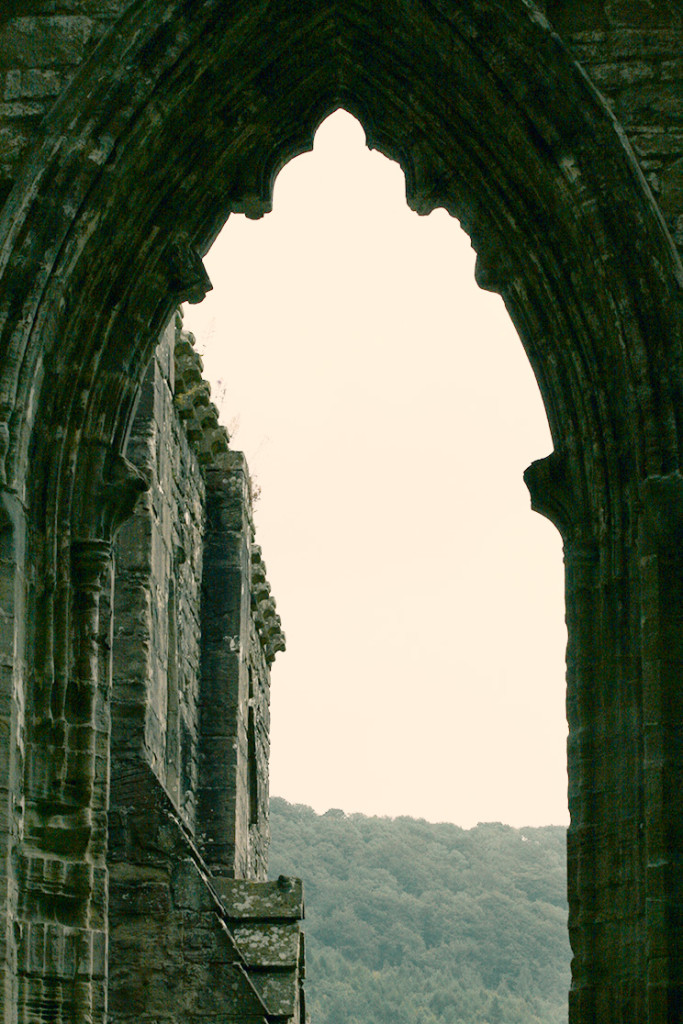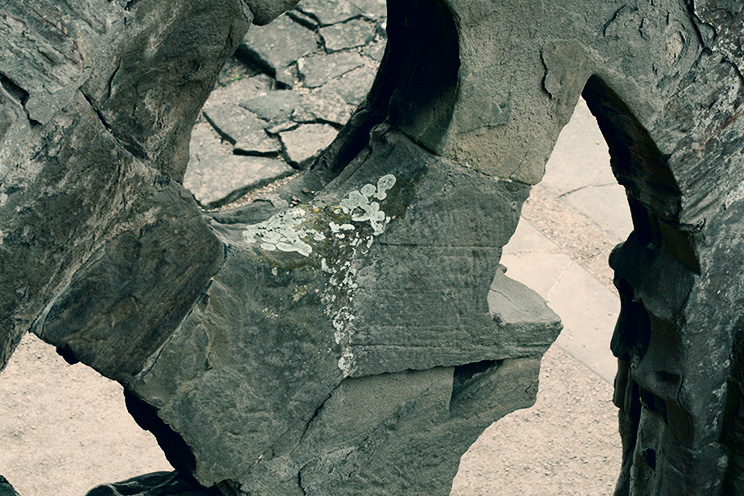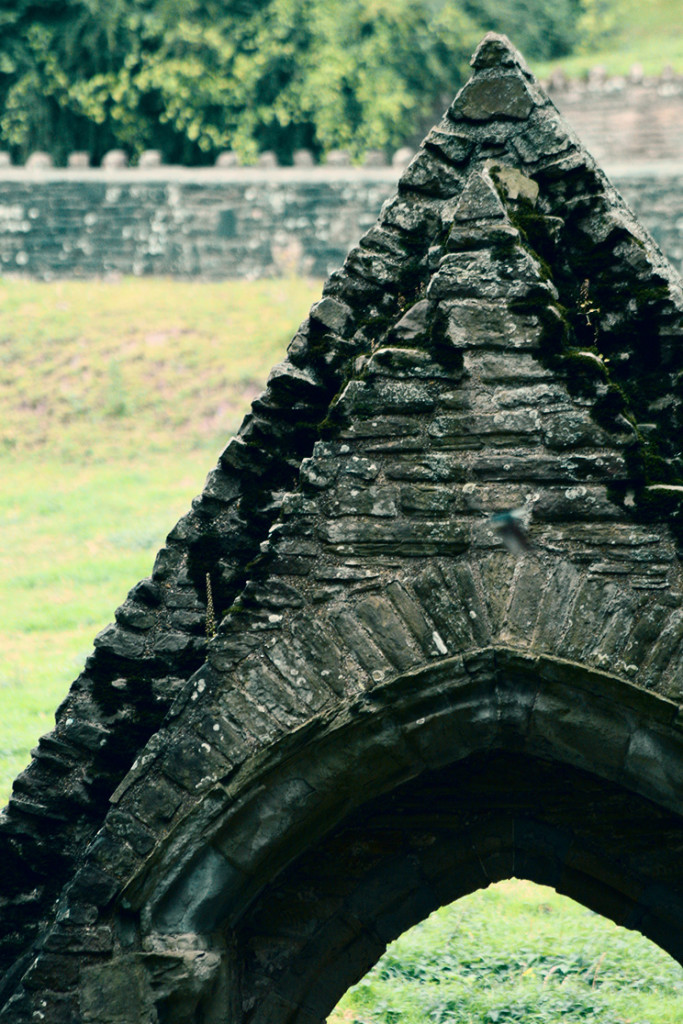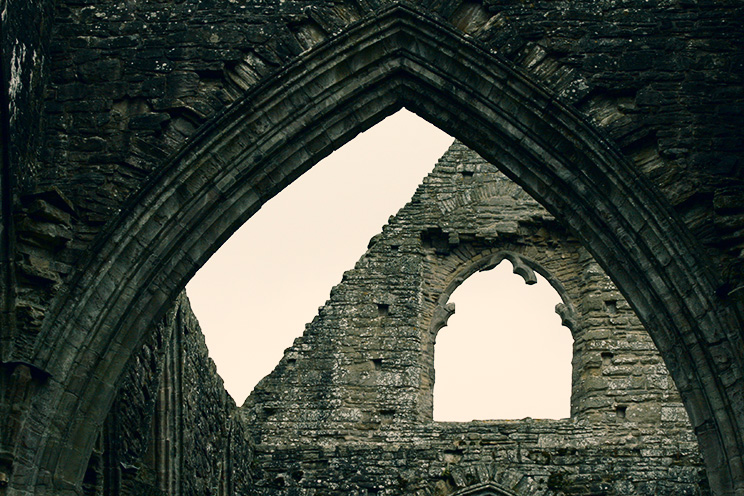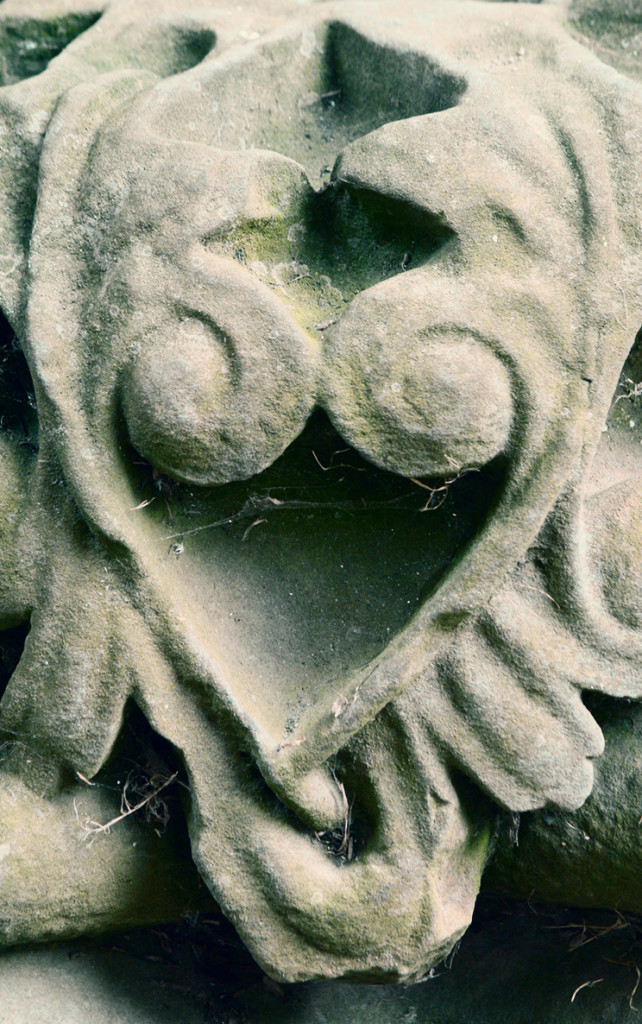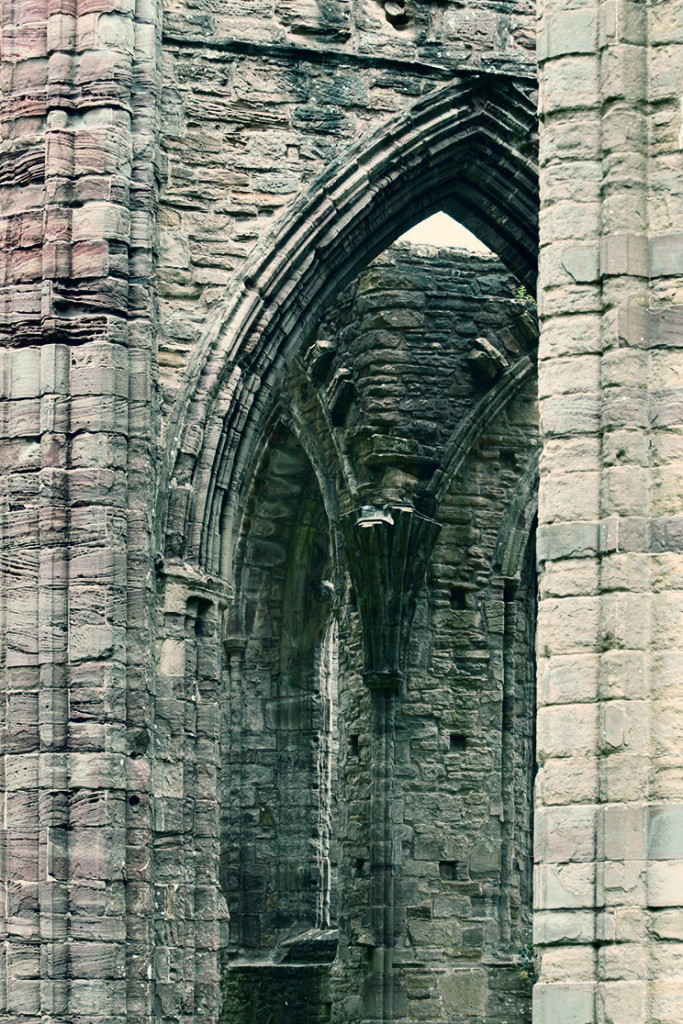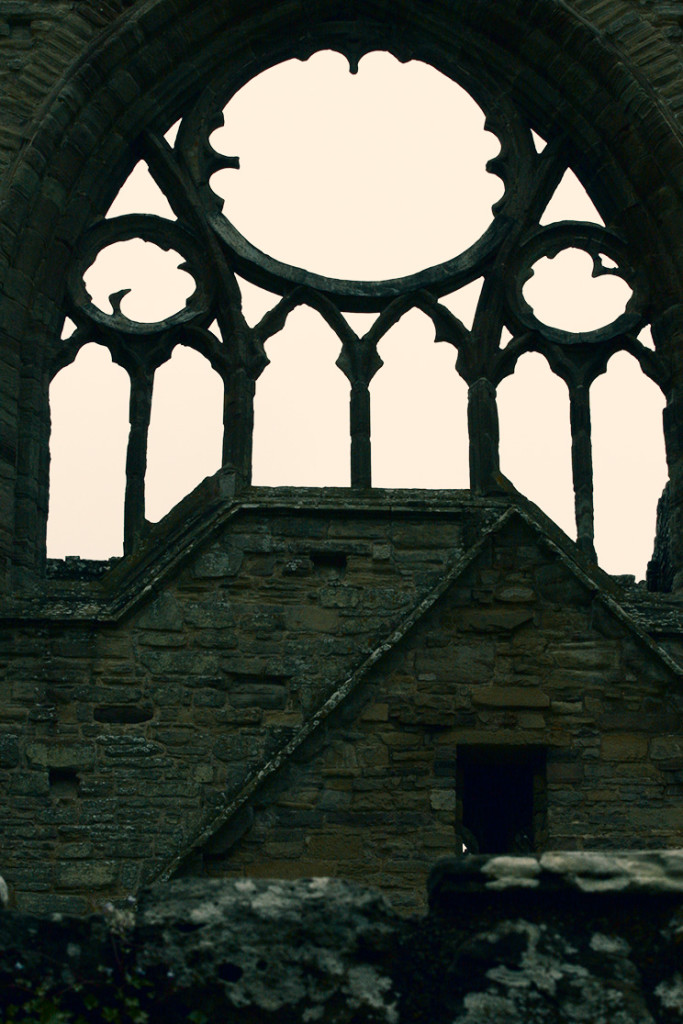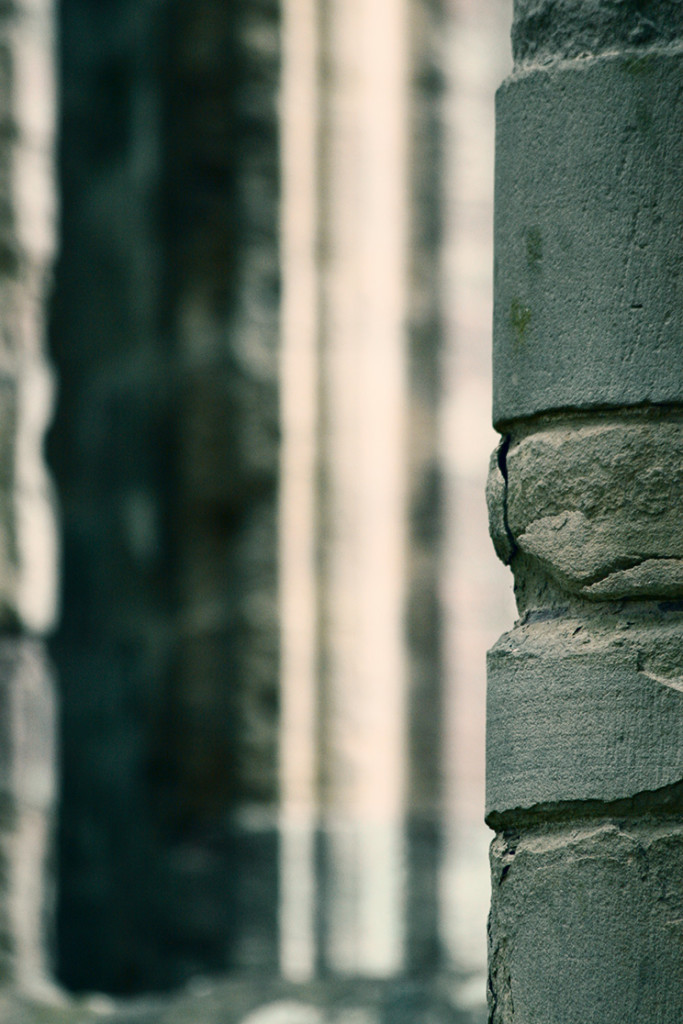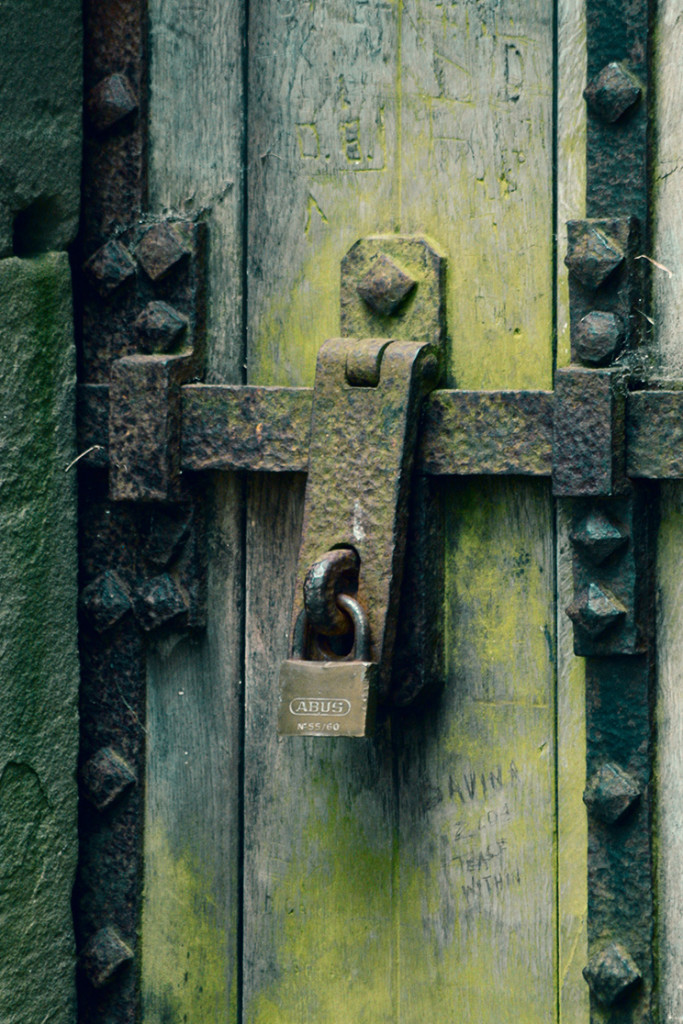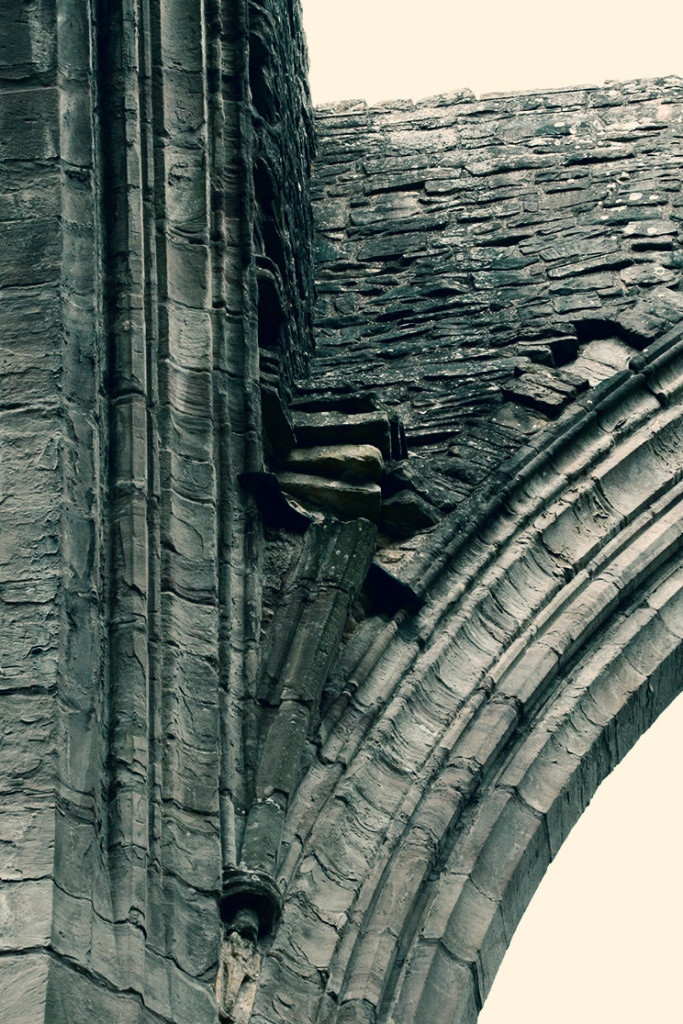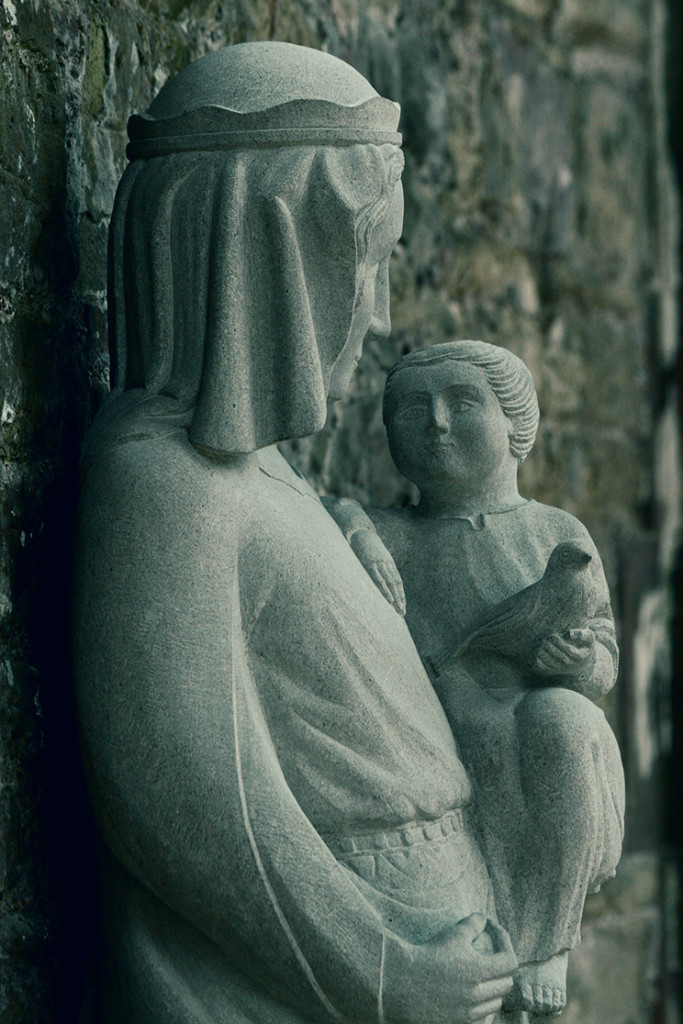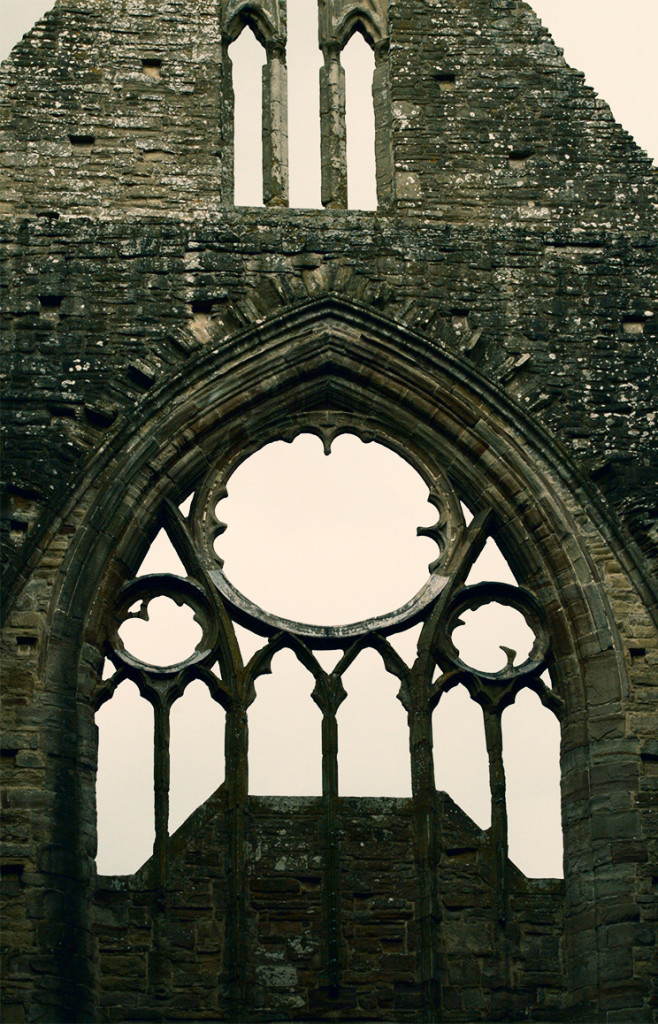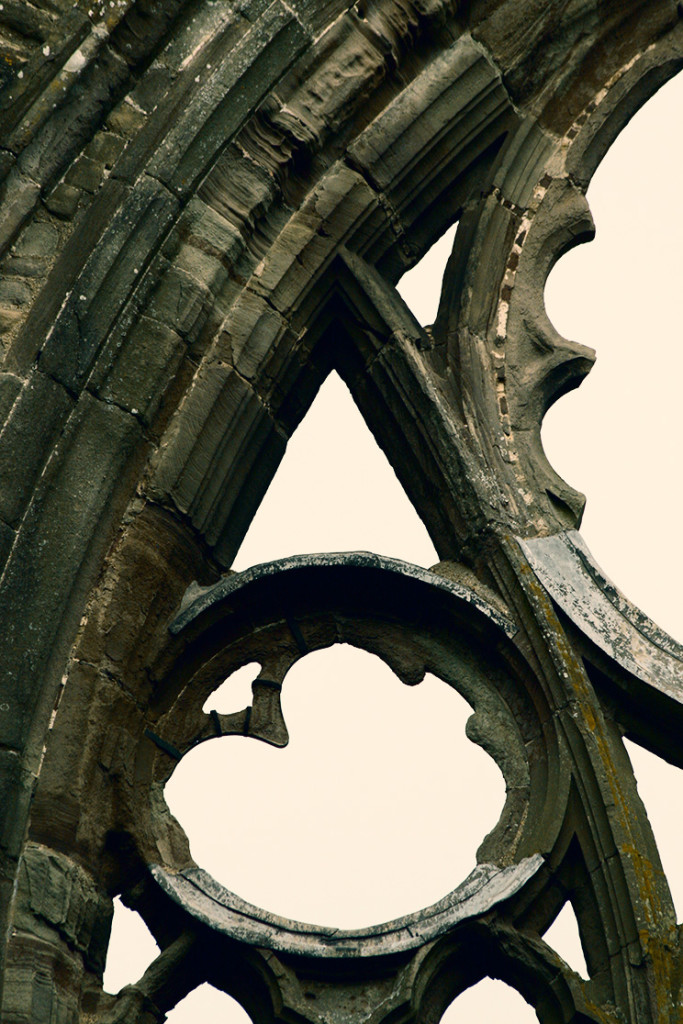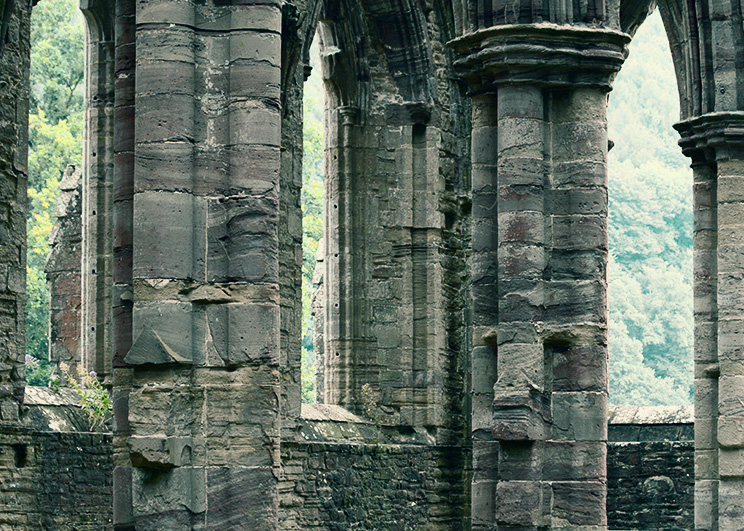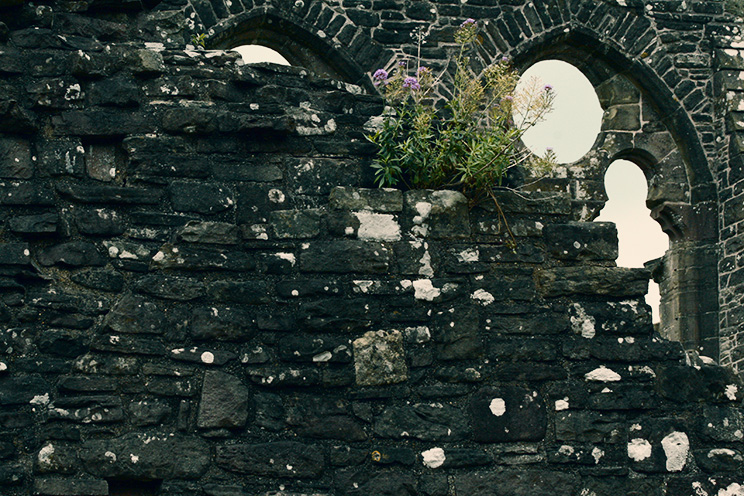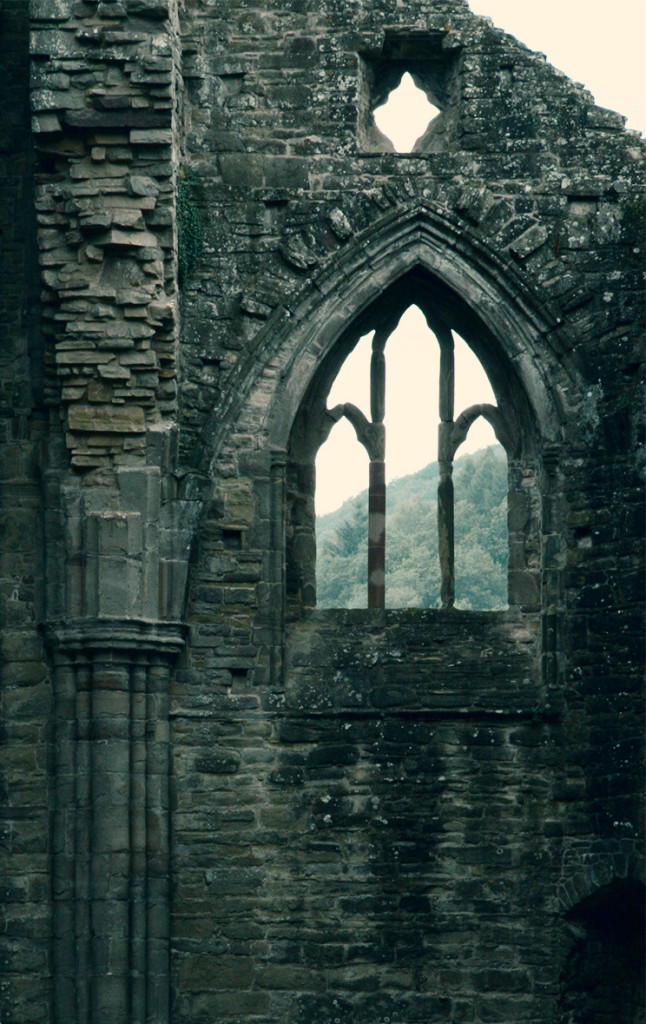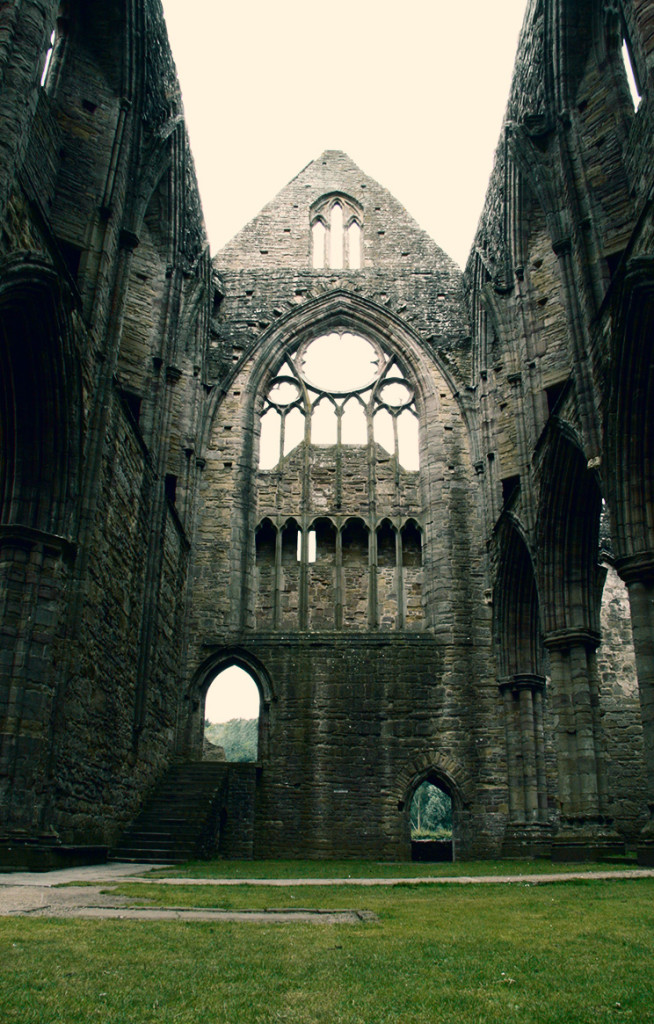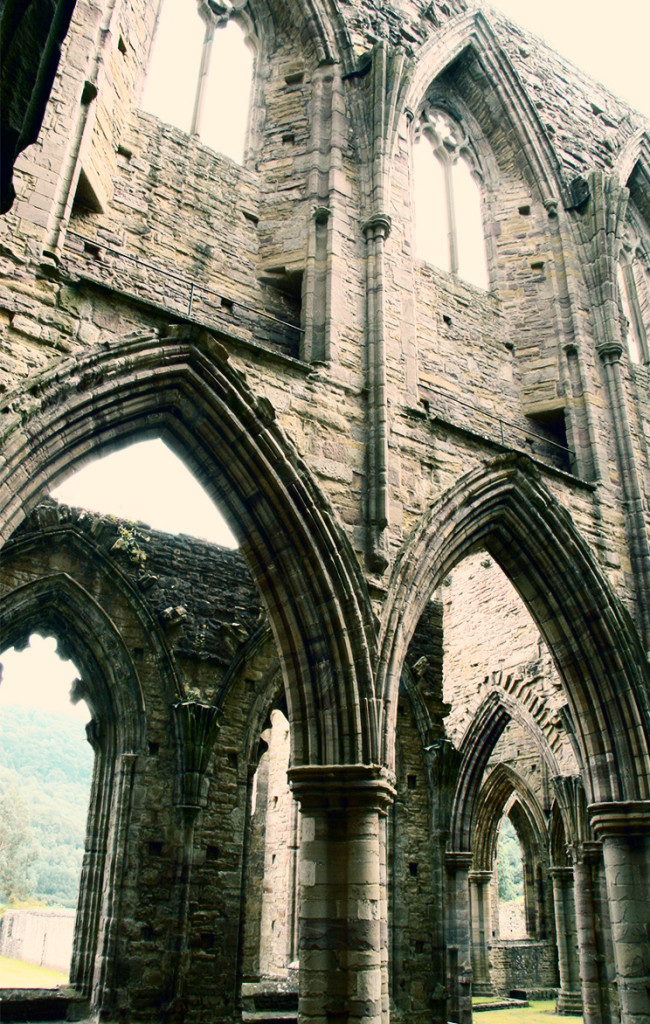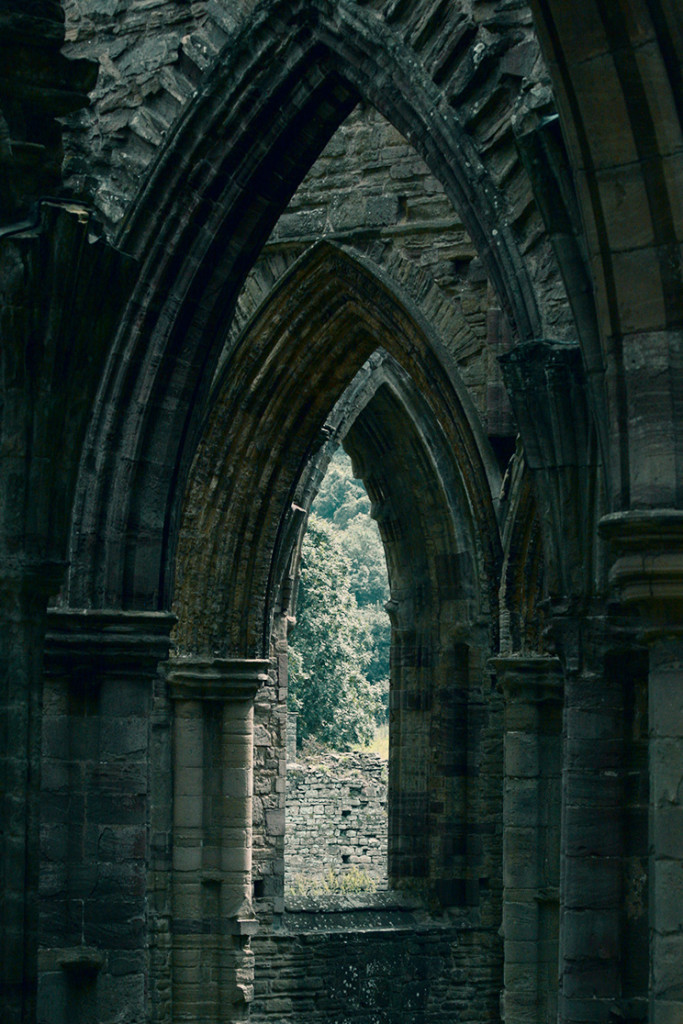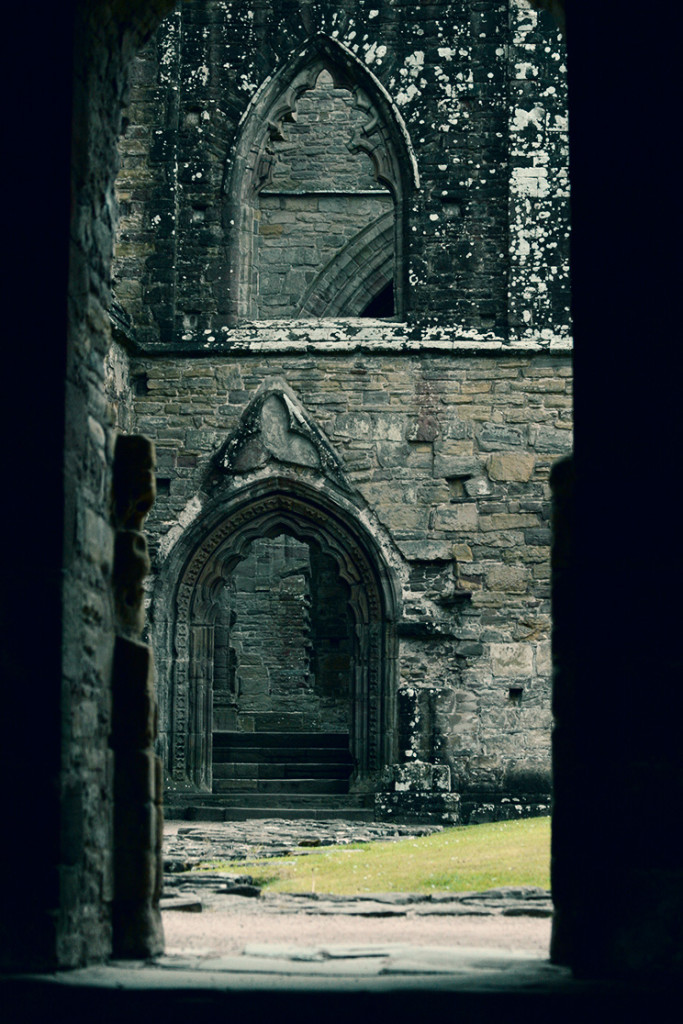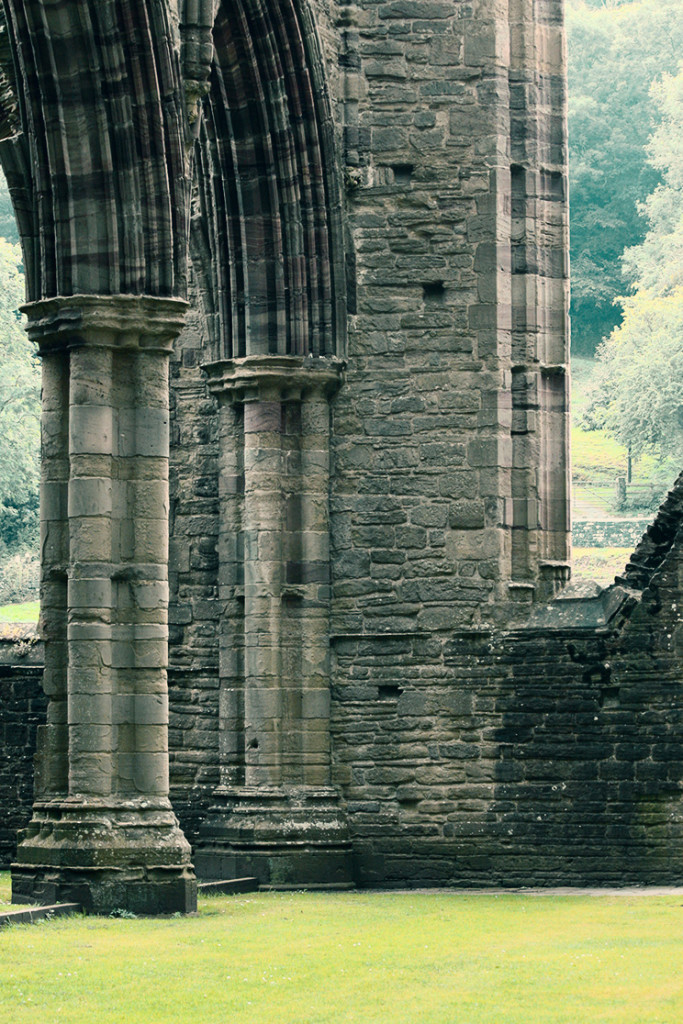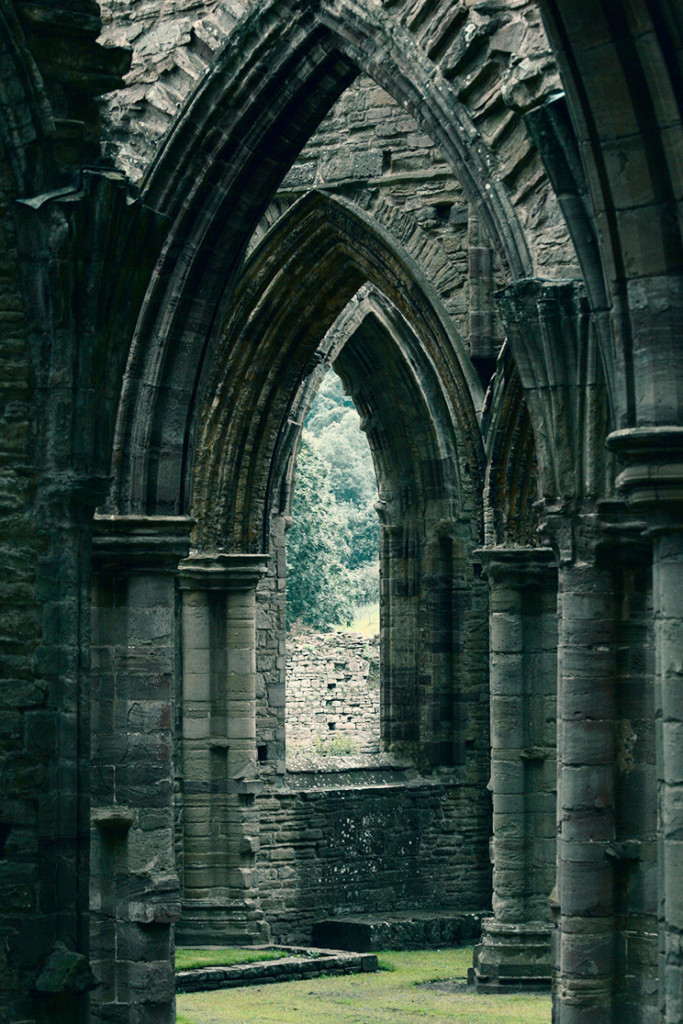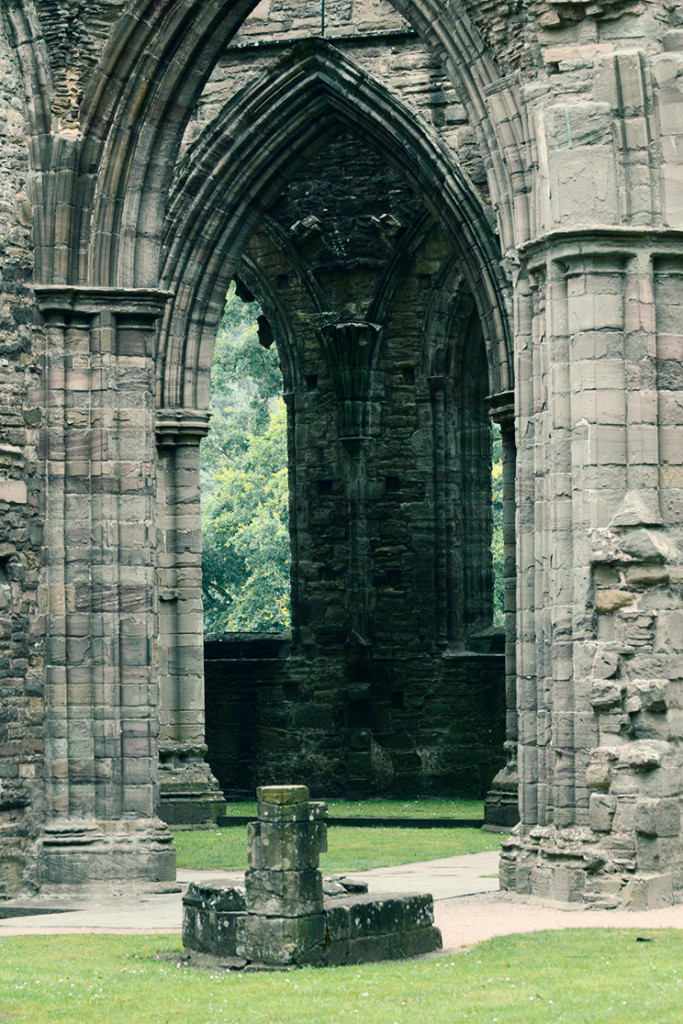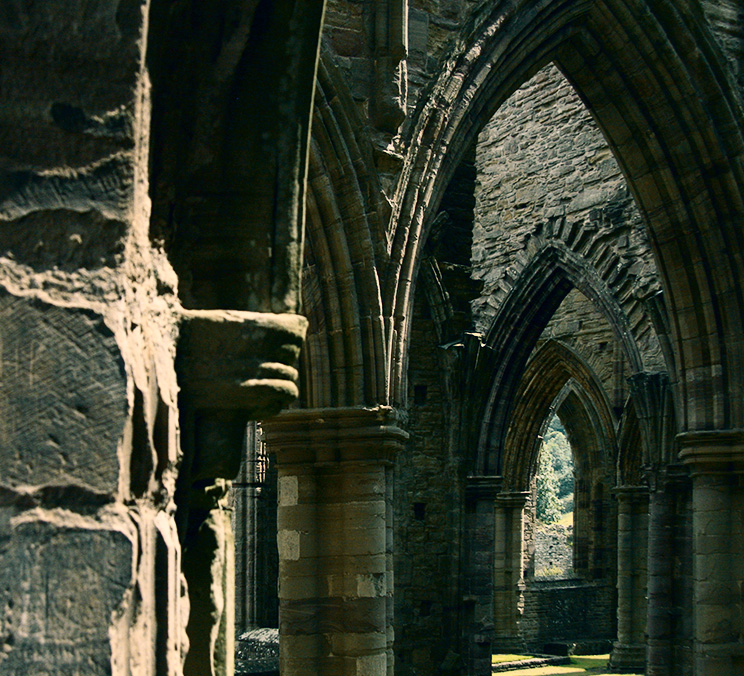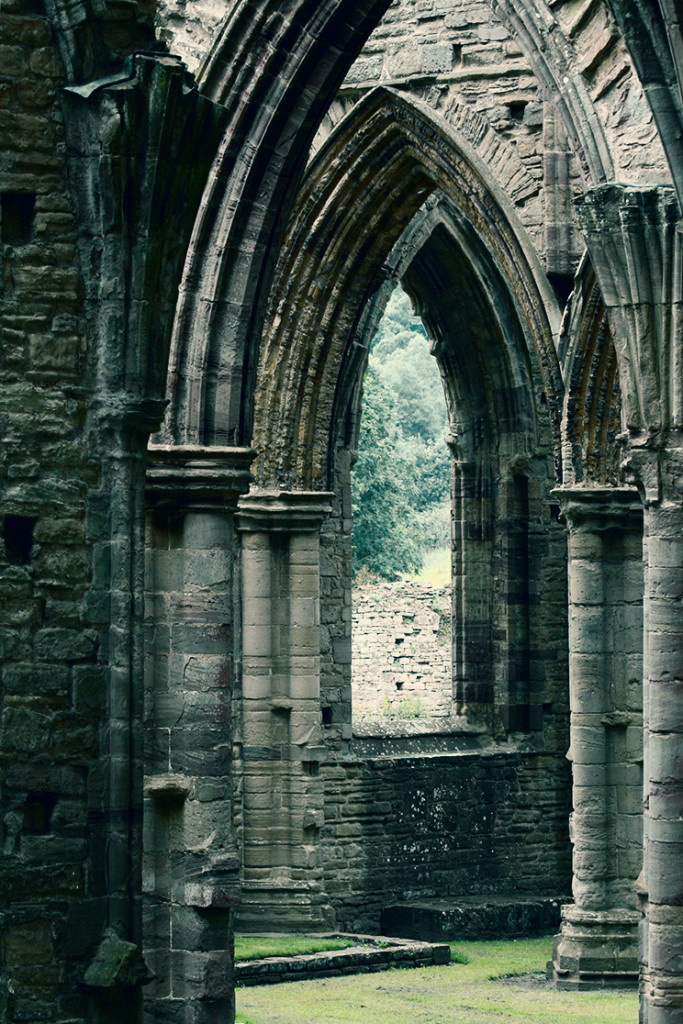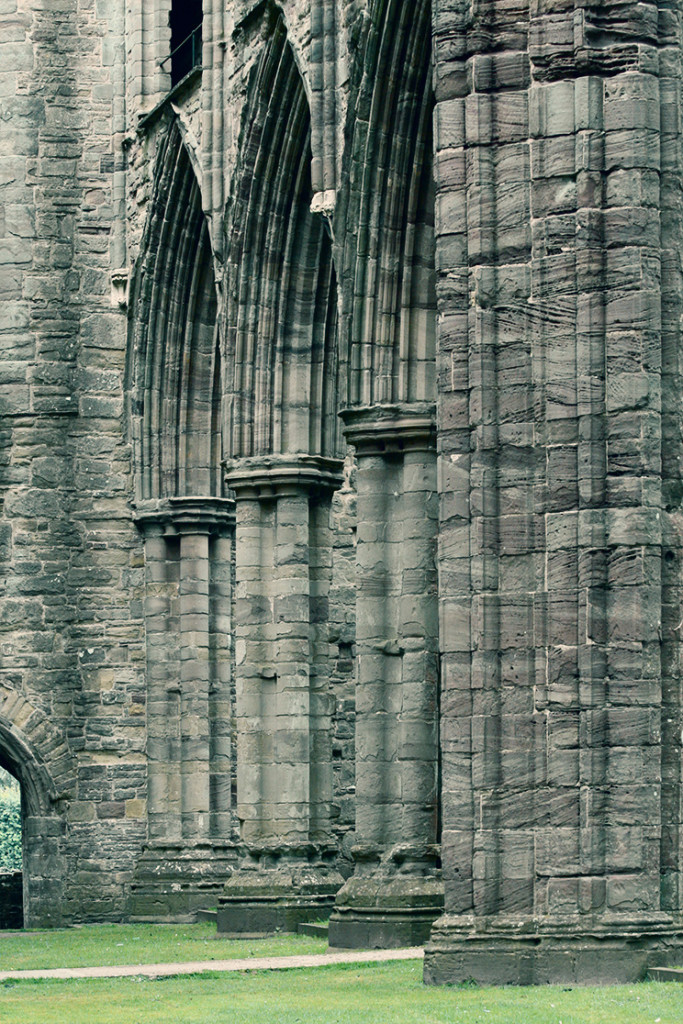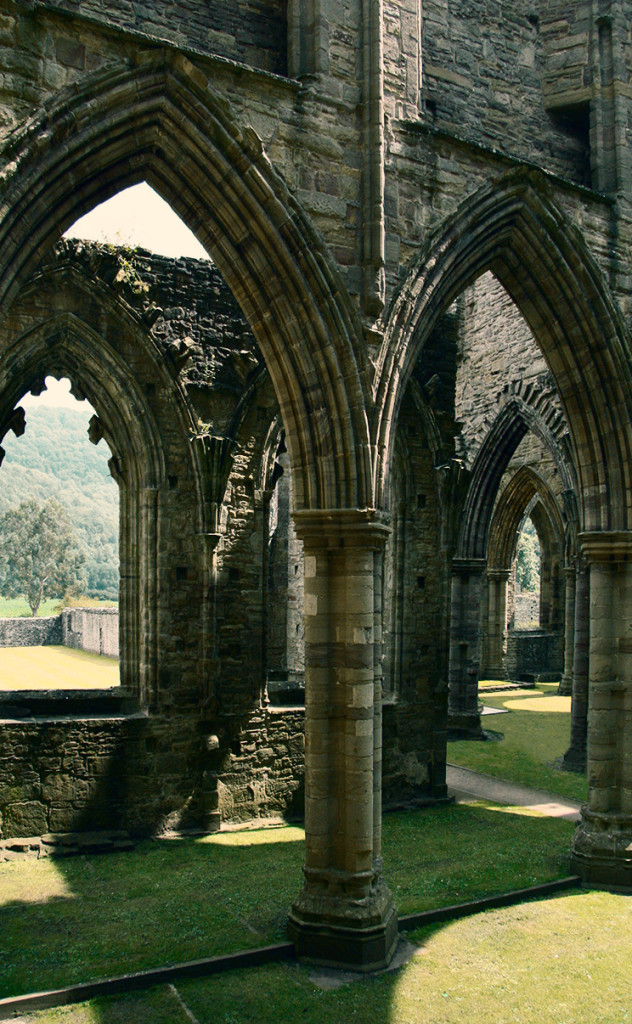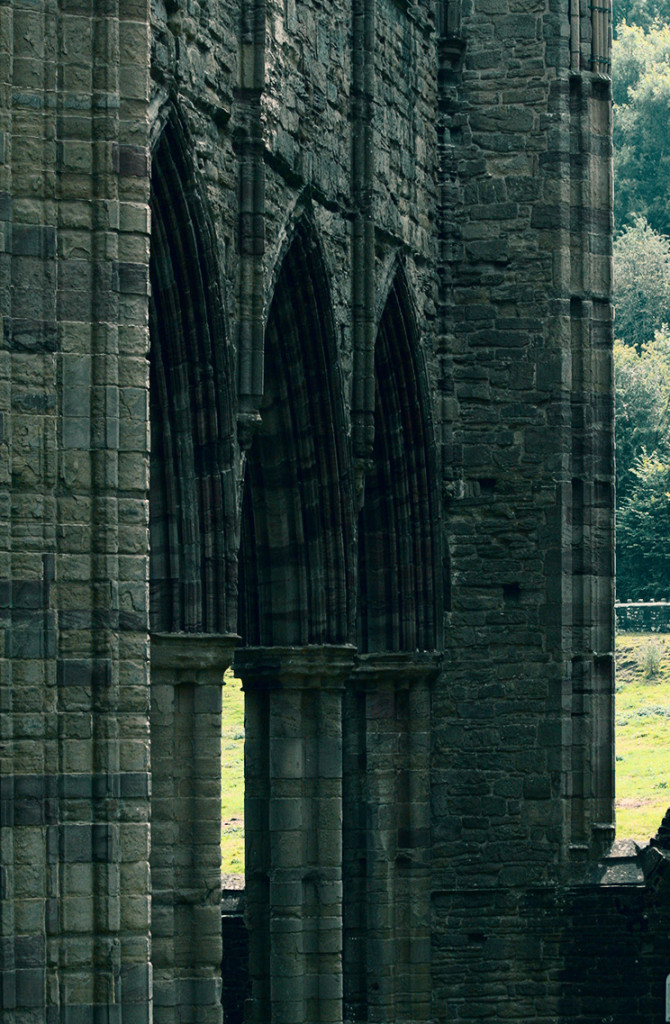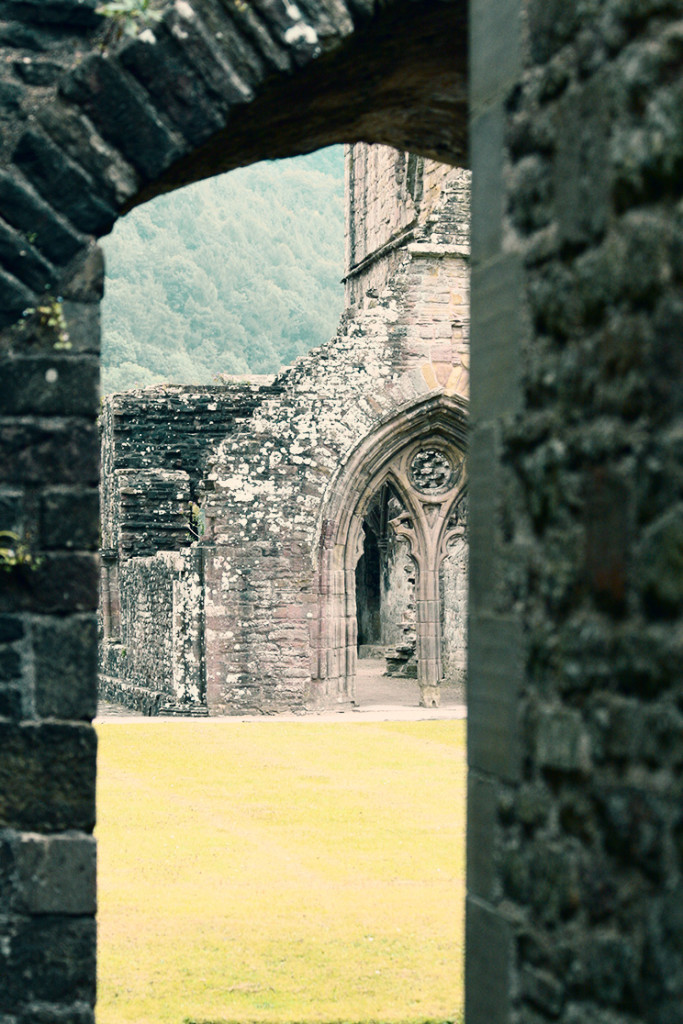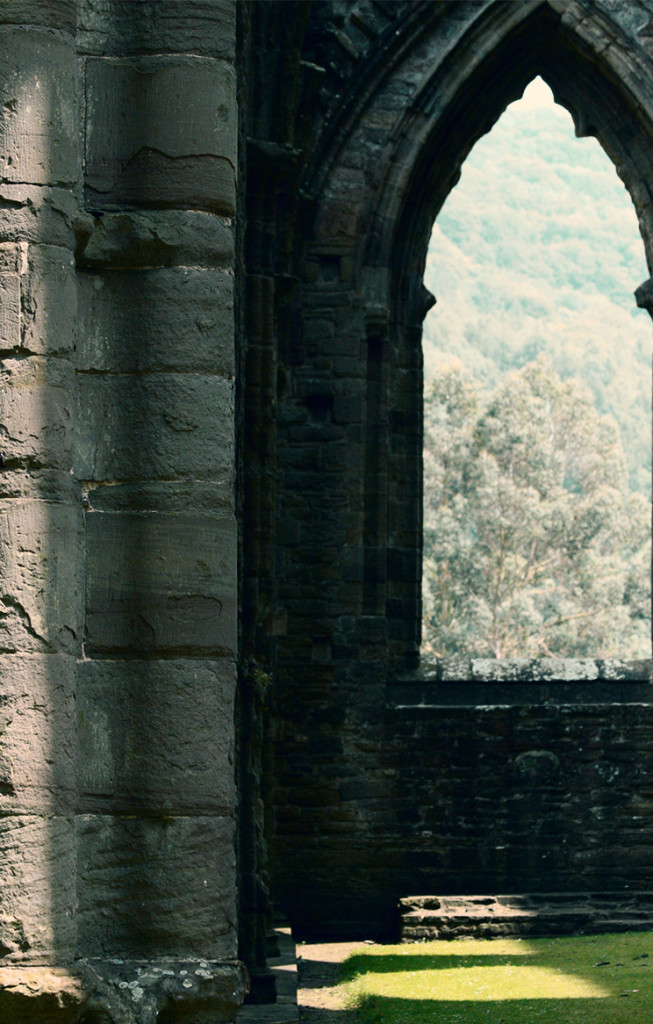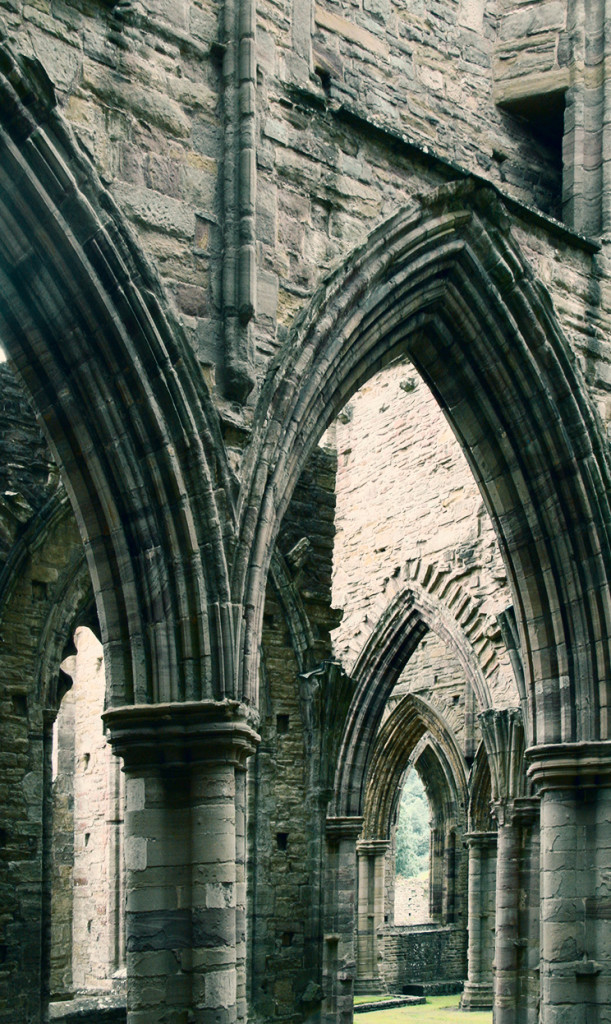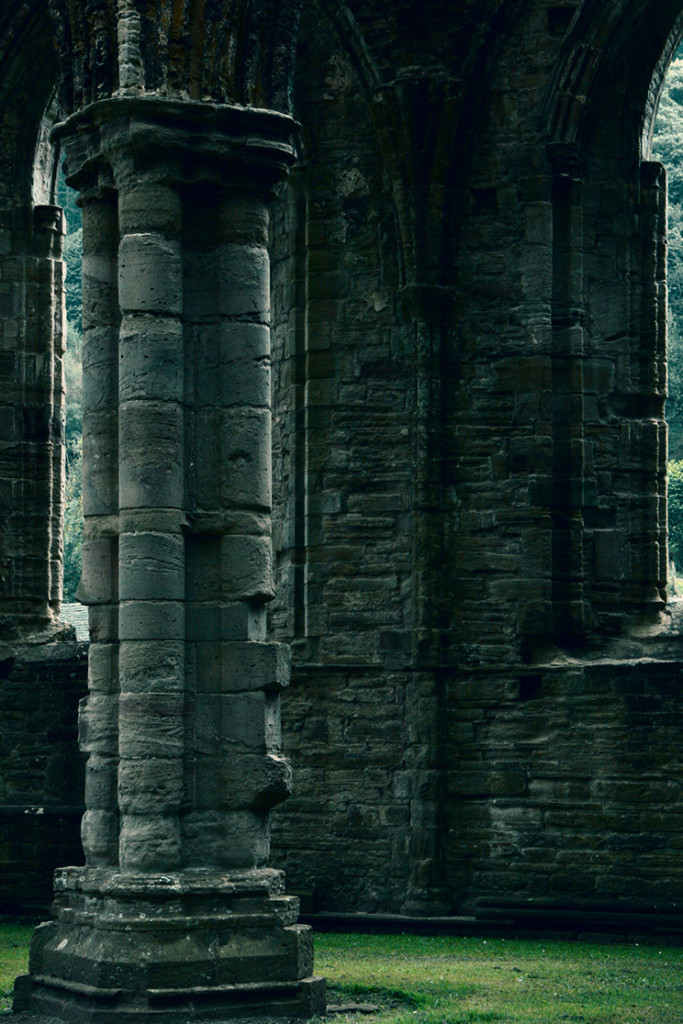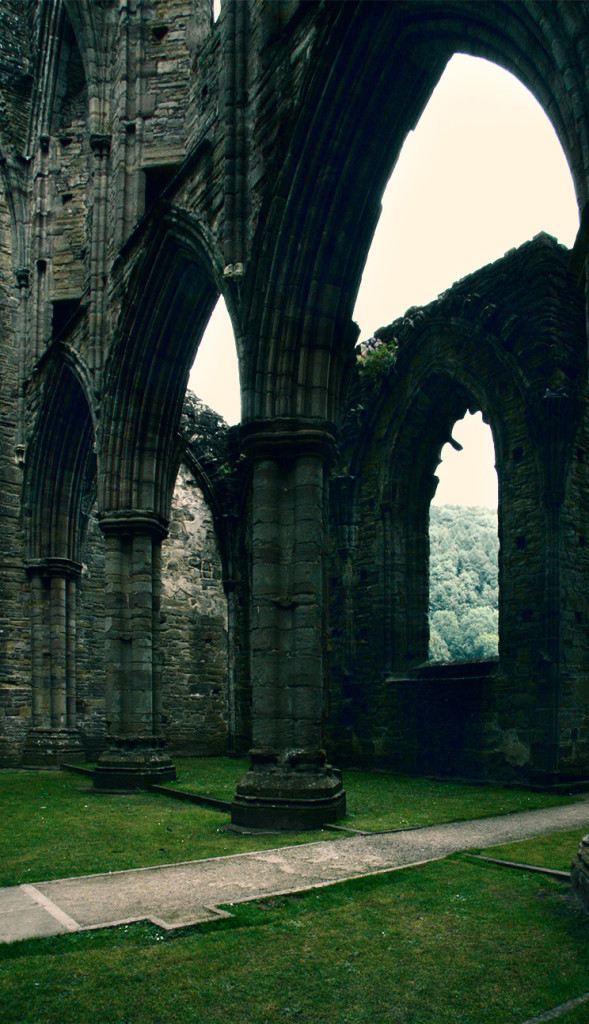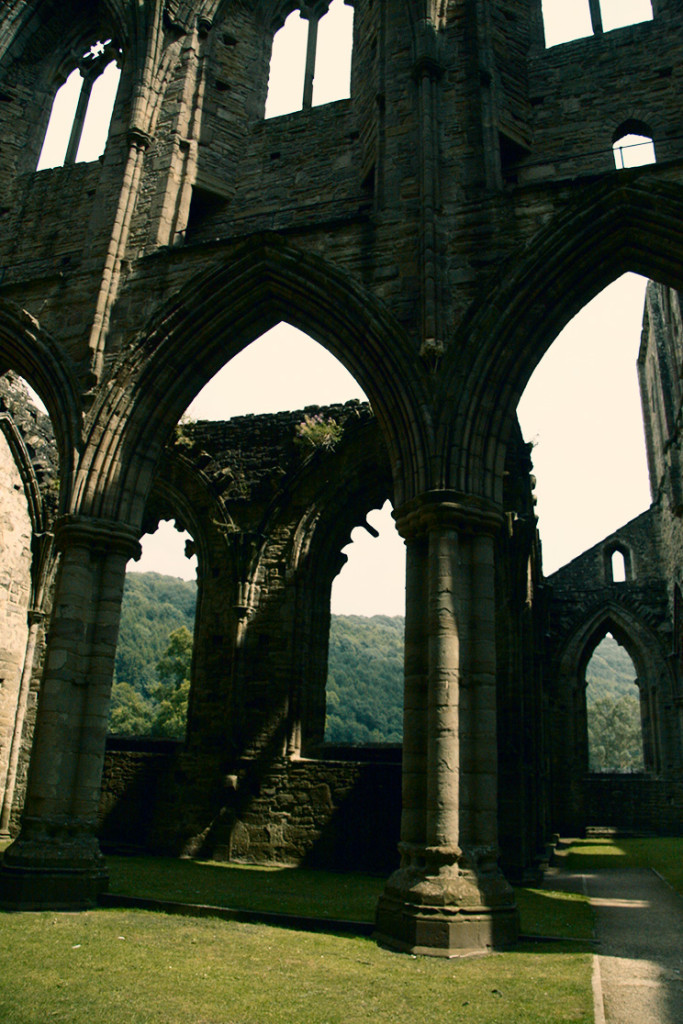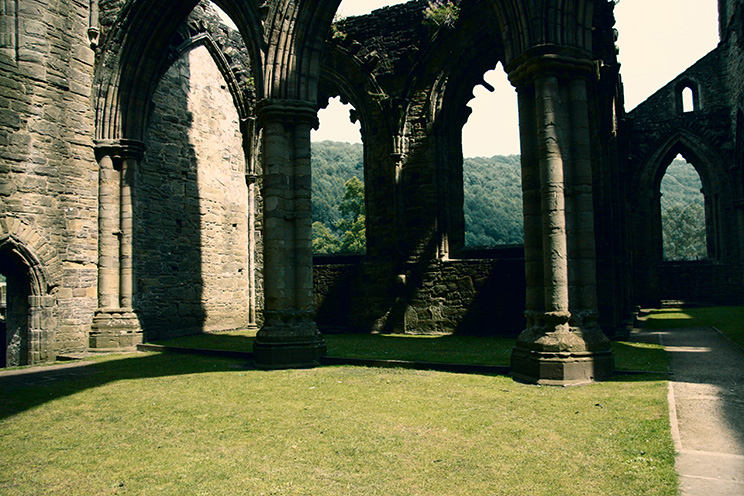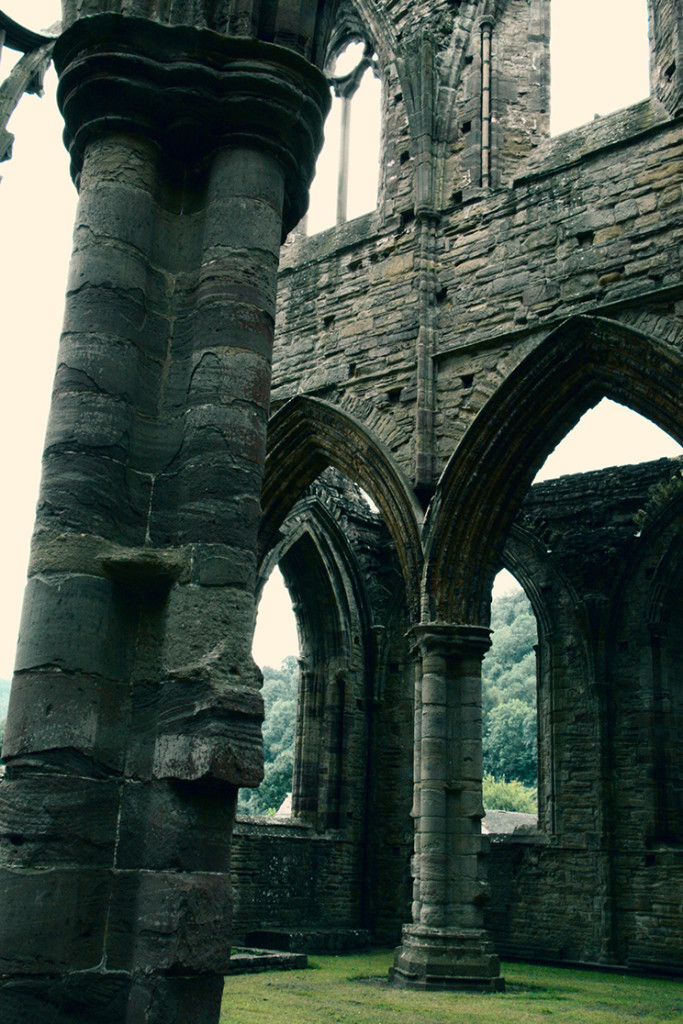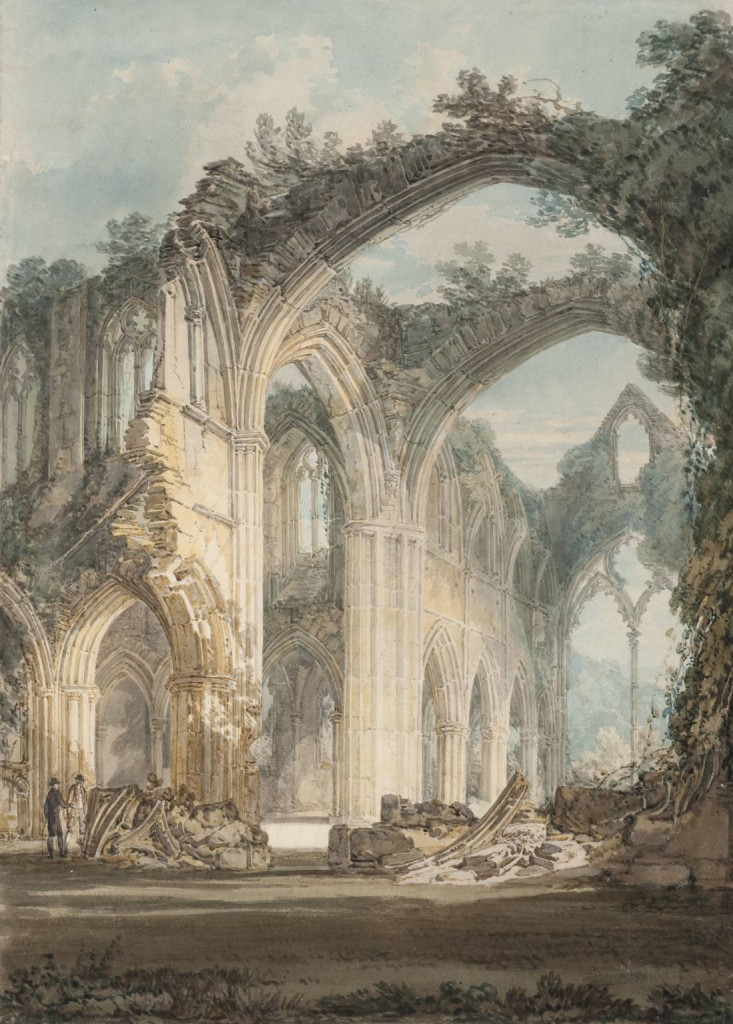
Five years have past; five summers, with the length
Of five long winters! and again I hear
These waters, rolling from their mountain-springs
With a soft inland murmur.–Once again
Do I behold these steep and lofty cliffs,
That on a wild secluded scene impress
Thoughts of more deep seclusion; and connect
The landscape with the quiet of the sky.
So lauten die ersten Verse des Gedichtes das ein berühmter englischer Dichter an einem nebligen Morgen im Juli des Jahres 1798 schrieb als er auf einem Hügel saß und auf die Ruinen dieses einst so stattlichen Baus blickte.
Die Abbey wurde am 9. Mai 1131 von einem anglonormannischen Adligen als Zisterzienserkloster
gestiftet und die ersten Klostergebäude waren 1136 fertiggestellt. Diese Gebäude haben aber bis auf wenige Reste die Zeit nicht überstanden. Die heutigen Ruinen der riesigen Abbey stammen aus der zweiten Hälfte des 13. Jahrhunderts
Durch die Pestepidemie von 1349 kam es zu vielen Todesfällen in und um die Abbey wodurch die Mönchsgemeinde und die um das Kloster herum lebende Bauernschaft erheblich reduziert wurde.
Während eines Aufstands im 15. Jahrhundert kam es zu Zerstörungen an einigen Gebäuden des Klosters und im September 1536 schließlich übergab der letzte Abt die Kirche und die umliegenden Gebäude an die Krone. Die Wertgegenstände wurden in die königliche Schatzkammer gebracht und das Gebäude einem Earl zugesprochen, der das Bleidach der Abbey abtragen ließ und diese somit dem Verfall preis gab. Zum Schluss lebten noch 12 Mönche und 35 Bedienstete im Kloster.
Im 18. Jahrhundert malte ein bekannter englischer Künstler die Ruine mit dem damals noch vorhandenen Efeubewuchs in Aquarell Technik. Das oben links gezeigte Bild ist eines aus dieser Serie.
Das Bild entstammt der Tate (www.tate.org.uk) und unterliegt als Public Domain keinem Copyright.
Five years have past; five summers, with the length
Of five long winters! and again I hear
These waters, rolling from their mountain-springs
With a soft inland murmur.–Once again
Do I behold these steep and lofty cliffs,
That on a wild secluded scene impress
Thoughts of more deep seclusion; and connect
The landscape with the quiet of the sky.
These are the first lines of a poem which a well known english poet wrote when he was sitting in the foggy dew on a hill on the morning of a day in July 1798, overlooking the ruins of this once so magnificent building.
The abbey was donated on May 9. 1131 by an anglo nor manic noble and was used as a cistercian monastery. The first houses where finished in 1136 but these early buildings didn’t survive the time. The ruins of the abbey as they are shown on my pictures are from the second half of the 13th century.
During the plague of 1349 a lot of people in the monastery and on the farms around it died and so the community of monks was reduced drastically. An insurrection in the 15th century led to the destruction of some buildings and in September 1536 the the last abbot handed the abbey and the remaining buildings over to the crown of England.
The valuables where stored in the royal treasure chamber and the monastery was given to an english noble man who dismantled the lead roof leaving the building to fall into decay.
At the end 12 monks and 35 servants where living in and around the abbey.
In the 18th century a well known english artist painted the ruins, which at that time where covered with ivy, in watercolor. The picture shown above on the left side is from this series.
The picture comes from the Tate (www.tate.org.uk) and is identified as being free of known restrictions under copyright law, including all related and neighboring rights.


























































